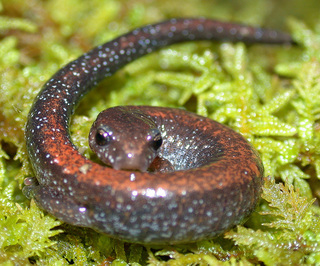Having hearing problems myself, I decided to research AT devices for students with auditory processing disorders. In contrast with my own hearing impairment, individuals with APD generally have good hearing (i.e. the structures in the ear are fine), but have difficulty processing this information when it reaches the brain. Children with APD have trouble recognizing the differences between the sounds in words, and have even more difficulty in noisy environments or when performing a complex task. APD is classified as a learning disability, and also as a speech-language disorder. This disability can often be confused with many other disabilities, and may also function as a part of another disability.
I was unable to find a lot of AT used when treating APD, as it is a poorly understood disorder and there is still a lot of research to be done. The only technology, as opposed to teaching strategy, that I was able to find was an auditory trainer. This technology reduces background noise and allows the receiver to focus on the person speaking. Basically, they work as microphones that only one person can hear. This allows the child with APD to block out normal classroom noise, and focus on the sound of the teacher talking. I've also read about Auditory Memory Enhancement, a technique that allows students to make complicated information more basic, and helps with recall of information. This trains students with APD to break information into smaller segments, and to represent that information quickly and in a way that makes sense to them.
Just talking about the use of AT for students with APD, auditory trainers are different than hearing aids in that only specific sounds are being amplified, while background noises are not. Children with APD have difficulty focusing on and remembering auditory information; this technology allows them to concentrate on just one set of sounds, instead of picking it out among many. I think this technology is relatively simple to use for both the student and the teacher, and could make a major difference for students in the classroom.
Biology classrooms can sometimes be heavy in details, and technologies like this can help students with APD take good notes and focus on a lecture. However, a good teacher would also differentiate her class, and a student with APD could be classified as almost a default visual learner. Some of the accomodations that could be made in a classroom that has a child with APD are: lecture notes already written out, so students can concentrate on listening to lectures, graphs and charts of information, the use of graphic organizers, transcripts for videotapes, quiet areas for groupwork so that background noise is less of an issue, seating considerations, and giving directions one at a time. These practices, along with the use of an auditory trainer, would allow students with APD an easier time with processing auditory information, and ways to focus on hearing and processing without the loss of content information.
Sunday, September 27, 2009
Tuesday, September 22, 2009
Meet the Standards
One technology that I would like to use in the classroom to incorporate a difficult concept in Biology would be cell phones and evolution. Students often have a difficult time understanding what evolution is, and how it works. I also know that cell phones have pretty much become ubiquitous and almost necessary in teen and adult life.
One thing you could do is have people pool their cell phones together, and pick out common characteristics or features that some phones have and some don't. This would work as a good analogy for genes in a population. Then, we could create a "selection event" where to complete a task, we'd have to use a feature that some phones had and some did not. For example, you could have a timed task for a phrase they would have to text. Phones with keyboards would be much faster than those without, though some phones without keyboards might make the time constraints based on how fast the students could text. This would show students how natural selection works at a genetic level. They would be able to see that the population evolves, and not the individual, which many students have difficulty understanding.
This example aligns with the concepts from Chapter 1 because texting has become more popular than actually talking on the phone, and I think it would really engage them. I think a timed "selection event" would be fun and challenging, while at the same time providing a powerful example of a concept that may not be readily apparent. Using the technology, in this case, is more about engaging students and making content accessible for them, more than utilizing the cell phone technology itself. I think there's lots of different ways we can use technology in the classroom, and as long as that technology serves an instructional purpose, it doesn't have to be all about fancy programs or complicated activities.
One thing you could do is have people pool their cell phones together, and pick out common characteristics or features that some phones have and some don't. This would work as a good analogy for genes in a population. Then, we could create a "selection event" where to complete a task, we'd have to use a feature that some phones had and some did not. For example, you could have a timed task for a phrase they would have to text. Phones with keyboards would be much faster than those without, though some phones without keyboards might make the time constraints based on how fast the students could text. This would show students how natural selection works at a genetic level. They would be able to see that the population evolves, and not the individual, which many students have difficulty understanding.
This example aligns with the concepts from Chapter 1 because texting has become more popular than actually talking on the phone, and I think it would really engage them. I think a timed "selection event" would be fun and challenging, while at the same time providing a powerful example of a concept that may not be readily apparent. Using the technology, in this case, is more about engaging students and making content accessible for them, more than utilizing the cell phone technology itself. I think there's lots of different ways we can use technology in the classroom, and as long as that technology serves an instructional purpose, it doesn't have to be all about fancy programs or complicated activities.
Subscribe to:
Posts (Atom)



